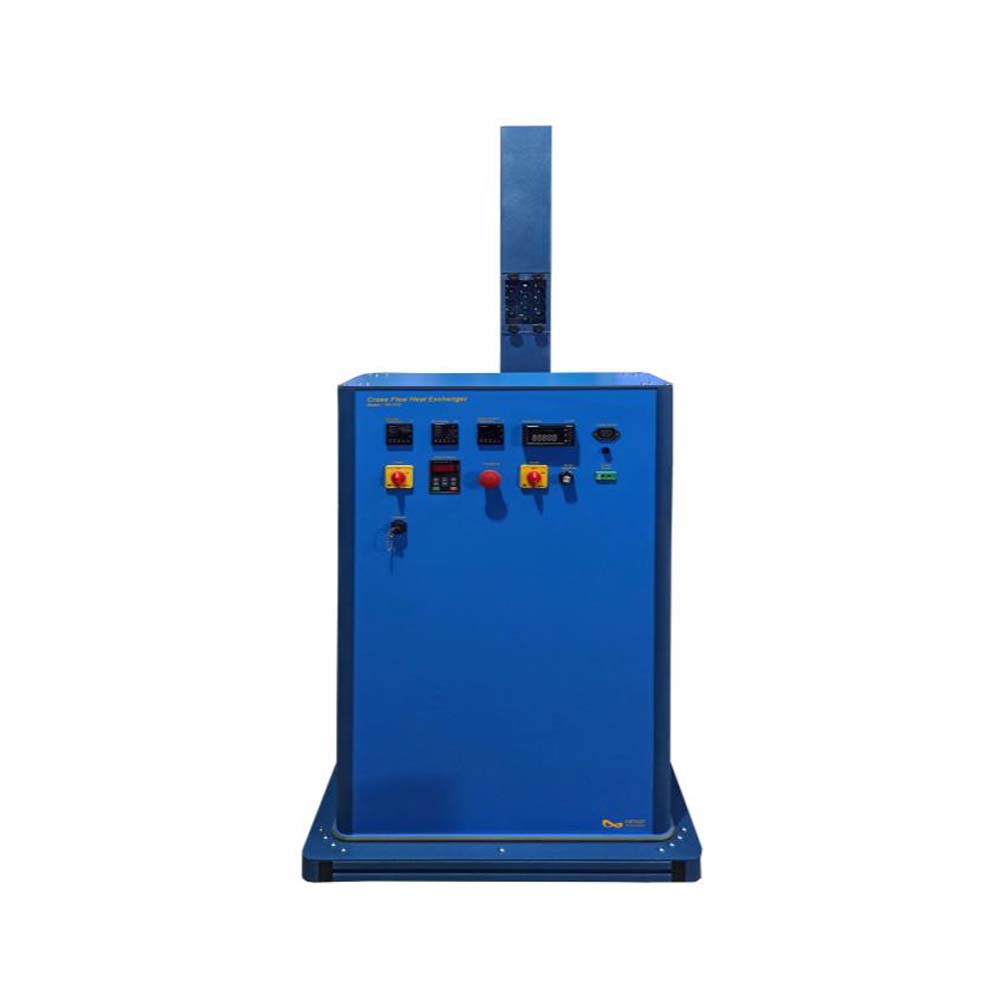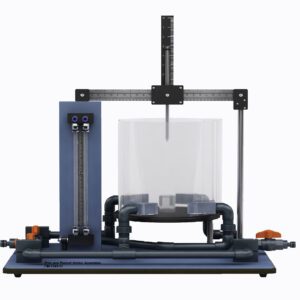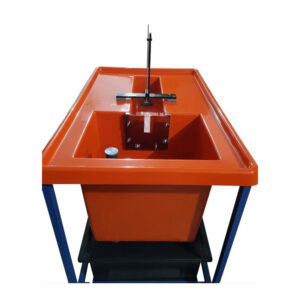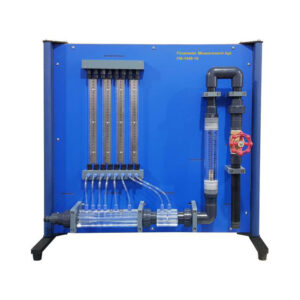Heat transfer is the most common phenomenon in many practical applications in energy conservation, transmission and utilization. Heat exchangers play a very important role in energy conservation, transmission and utilization. Cross Flow Heat Exchangers are one of the most common types of heat exchanger used in countless applications such as automotive radiators, heater cores, condenser & evaporators of HVAC etc. The unit Cross Flow Heat Exchanger is designed to enables the students to understand the heat transfer rates by free & forced convection. It consists of a vertical air duct. Air is drawn through the duct with the help of a fan. A digital display on the front of the instrumentation unit allows the students to view all experimental data. The experimental unit mainly comprises a vertical air duct. A fan draws the air through the duct. Interchangeable heaters dissipate heat directly into the air flow. The following heater elements are included: pipe, pipe bundle and finned pipe. To investigate the effect of the flow in the pipe bundle, the heater insert can be positioned in different pipe rows. Electronic sensors are used to take measurements. The measured values are indicated digitally on the display unit and transferred directly to a PC (optional). Software for data acquisition is optional. The software enables, among other aspects, the measured data to be recorded and stored. The flow rate, Reynolds and Nusselt numbers are calculated, temperature-time relation and the dependence of the Nusselt number on the Reynolds number can be demonstrated graphically.
Experiments
- Investigation of convection processes.
- Comparison of heat transfer for different heating elements.
- Comparison between different heating elements.
- Demonstration of the relationship between heat transfer, area of heat transfers and flow velocity (Nusselt).
Specifications
- Experiments with a cross-flow heat exchanger.
- Heating of an air flow using heating elements, heating power adjustable.
- Heating elements: pipe, pipe bundle, finned pip Air flow adjustable.
- Electronic sensors for temperature, differential pressure, power.




